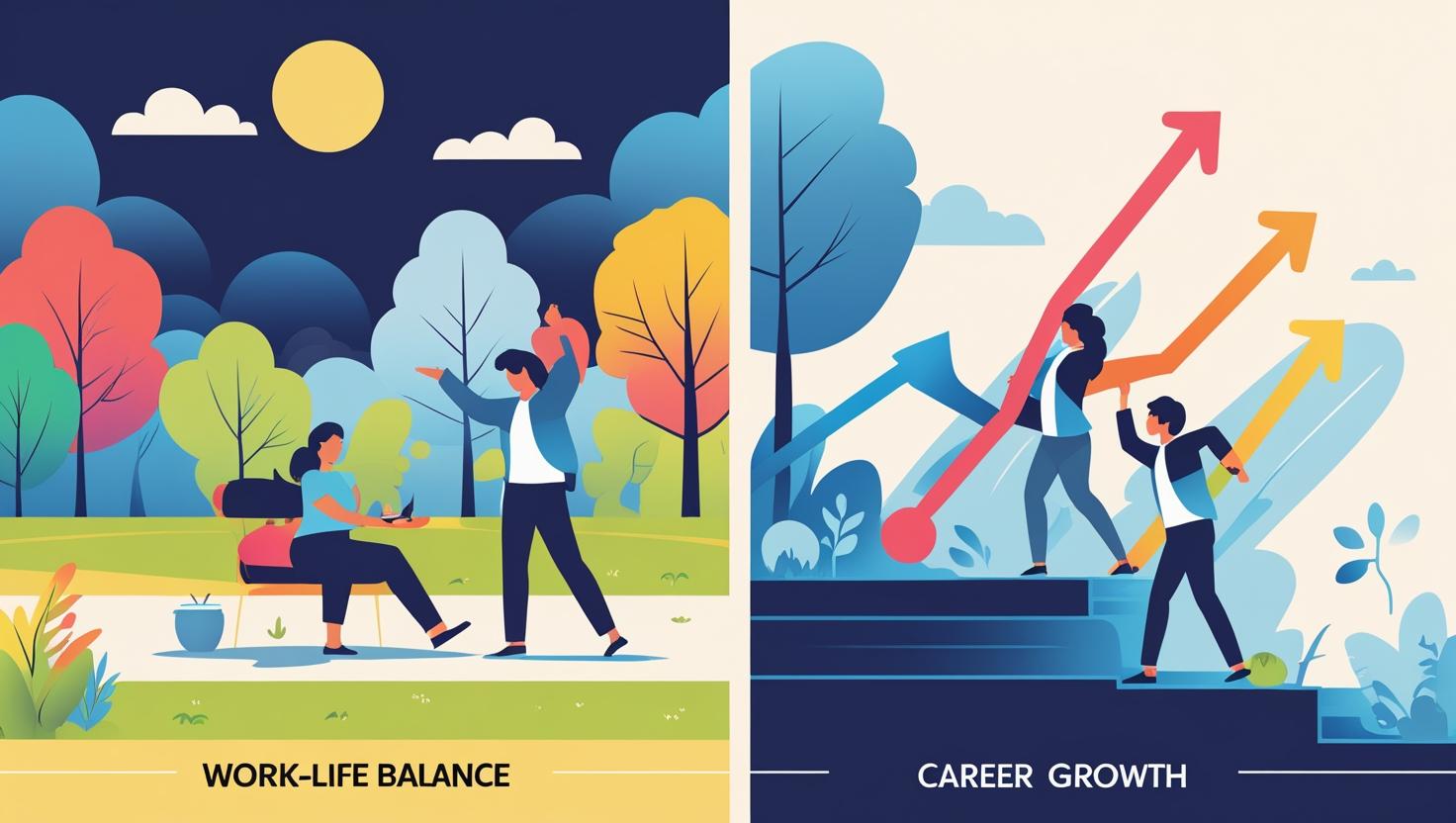
In today's workplace, work-life balance is becoming more valued than ever. Yet, many professionals are also driven by the desire for career growth to move forward, gain recognition, and increase income.
So, can you realistically pursue both at the same time? Or is it always a trade-off?
This article takes a closer look at what these concepts actually mean, how they interact, and what you can do—especially if you're a mid- or senior-level professional—to achieve both.
Many professionals fall into this assumption:
• To grow in your career, you must sacrifice your personal life
• To protect your time, health, and relationships, you must accept slower career progression
This may sound logical, but it's not the whole picture.
In truth, it's not about how many hours you work, but how you manage your time, energy, and career focus.
Work-life balance is often misunderstood as:
• Clocking out at exactly 5 PM
• Avoiding emails or calls after hours
• Clear separation between “work” and “life”
In reality, it's about maintaining control over your time and energy. It's the ability to stay engaged at work without feeling consumed by it. Some people work 10 hours a day and still feel balanced. Others work 7 hours and feel drained.
Career growth isn’t limited to:
• Promotions
• Salary increases
• A fancier job title
It’s also about how much you’re learning, how your expertise is developing, and how much impact you’re creating. You might not manage a team, but still become a top expert in your field. You might not earn more immediately, but your long-term market value can rise significantly.
The balance between growth and life depends heavily on where you are in your career journey.
Early-stage (0–5 years):
At this stage, fast skill-building is crucial. You’ll likely need to invest more time and energy, sometimes at the expense of personal time.
Focus on growth, but don’t ignore early signs of burnout.
Mid-level (5–10 years):
You’ve developed core competencies and are likely managing increasing responsibilities.
This is when burnout risk rises—so finding a sustainable rhythm becomes critical.
Senior level (10+ years):
You’re expected to deliver results consistently while mentoring others or managing larger scopes.
Here, the opportunity to achieve both balance and growth becomes more realistic—if managed well.
1. Manage energy, not just time
Two people can work the same number of hours and produce very different results. High performers don’t just manage their time—they manage their attention and recovery.
Optimize your peak hours. Take meaningful breaks. Focus on work that matters, not just work that fills your calendar.
2. Choose the right environment—not just the right job title
Some organizations glorify overwork. Others support sustainable performance.
It’s not just about what you do, but where and how you do it. Look for cultures that value output over presence and offer growth without constant overload.
3. Evolve strategically—not aggressively
Growth doesn’t always mean doing more. Sometimes it means:
Doubling down on your core strengths
Increasing your depth instead of your workload
Learning to automate, delegate, or streamline better
This is what long-term sustainable career growth looks like.
Ask yourself:
• Where am I in my career journey?
• What matters most to me right now—speed or sustainability?
• Can I maintain this pace for the next 6–12 months without burning out?
Your career is a marathon—not a sprint. If you want to go far, you must avoid collapsing halfway.
Work-life balance and career growth are not enemies. They simply require different levels of attention at different phases of your career.
Like adjusting the ratio of coffee to milk in a cup—you can make it bold, mild, or just right for your taste. The key is to blend them intentionally.
At GreyFinders.com, we connect professionals with companies that:
• Value long-term development, not short-term burnout
• Offer real career paths—not just job descriptions
Create your candidate profile today and take one step closer to a career that fits both your goals—and your life.